Graham Reid | | 3 min read
The Residents: Picnic Boy

The code for a commercially successful pop song is relatively simple to crack: verse, chorus, verse, chorus, a different but similar bit (usually referred to as the bridge or middle eight), then verse, chorus, chorus . . .
Of course there are variants (the Beatles' She Loves You for example cleverly starts with the catchy chorus) but basically that's it. It comes down to verse/chorus. You can add an instrumental passage (guitar, keyboard, sax solo or whatever) but the important thing to remember is repetition . . . and a memorable chorus that reels them in.
However it isn't really quite that simple. If it were -- as any number of commercially successful songwriters like to remind us -- then everyone would be having hit singles. But not everyone is a Chinn-Chapman (hits for Sweet, Gary Glitter, Mud, Racey, Suzi Quatro etc), Lennon-McCartney or Diane Warren (look her up here, you may surprised).
However the idea of verse/chorus is nub of it all . . . as the Residents explored on their clever Commercial Album in 1980.
In theory our on-going feature series We Need to Talk About . . . should address the Residents themselves. But given they have preferred to remain anonymous (no, they aren't the Wiggles in another guise) or that if you know who they are, as with the Banksy mystique, you prefer not to give the game away, then attention falls on this canny album of 40 songs, each little more than a minute long.
The album title refers not just to the "commercial potential" of these ideas but that because of their brevity the Residents ran them as one-minute ad spots on KRFC radio in San Francisco. Given pop music exists at the interface of commerce and art this was not just a clever ploy but said something about that relationship, and about commercials where the jingle is usually exceptionally catchy.
In the early Seventies the four-piece Residents -- originally out of Louisiana but based near San Francisco at the time -- started coming to attention for their artfully constructed (and deconstructed) pop based on tapes, loops and sonically sculpted songs.
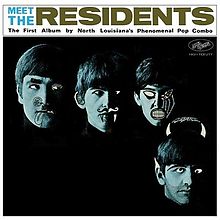 Their Meet the Residents album of '74 on their own Ralph Records -- in a cover which used and parodied the Beatles' US album Meet the Beatles -- brought them minor notoriety but barely sold. Over time however their skewed take on pop coupled with an avant-garde sensibility has made it seen as something of a landmark of outsider pop.
Their Meet the Residents album of '74 on their own Ralph Records -- in a cover which used and parodied the Beatles' US album Meet the Beatles -- brought them minor notoriety but barely sold. Over time however their skewed take on pop coupled with an avant-garde sensibility has made it seen as something of a landmark of outsider pop.
They subsequently released a number of albums which flew below public consciousness.
Most notable among them were the satirical Third Reich'n'Roll in '76 and the faux-Inuit/musicology project Eskimo in '79 on the cover of which they appeared in their famous eyeball outfits.
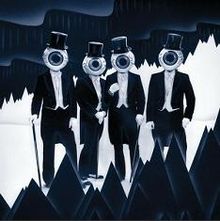 That striking image became their hallmark (and allowed for anonymity) and features on the cover of the Commercial Album although the main photos are John Travolta and Barbra Streisand, neither of whom bear any relation to the contents, least of all Streisand's music.
That striking image became their hallmark (and allowed for anonymity) and features on the cover of the Commercial Album although the main photos are John Travolta and Barbra Streisand, neither of whom bear any relation to the contents, least of all Streisand's music.
In fact, the closest reference point for the music on the Commercial Album is perhaps The Twilight Zone as eerie electronics, processed voices (sped-up tapes) and spooky bass lines stalk through the songs.
Those sped-up vocals make some of the songs (The Simple Song) sound like children from Village of the Damned.
But, as with commercial jingles, many of these snippets are oddly catchy. You don't readily forget Act of Being Polite, the equally strange Moisture (with guest guitarist Fred Frith's stuttering solo), the instrumental La-La (like Orchestral Manoeuvres in the Dark distilled into 66 seconds) or the stately instrumental closer When We Were Young.
And by being a minute long, as Stan Freberg said in his parody of Fifties rock'n'roll The Old Payola Roll Blues, their brevity meant they "get more [radio] plays that way"
Songs from the Commercial Album-- aside from when these songs were used as as commercials for the album -- didn't exactly pick up high-rotation, but here were interesting templates for off-kilter pop songs.
Sort of verse/chorus . . . and that was it.
Songs boiled down to the essence. The title of the 25th track nailed it: Less Not More.
And if you wanted your standard three-minute pop song then, as the cover advised, just play the song three times in row.
Brilliant.
For other articles in the series of strange characters in music, WE NEED TO TALK ABOUT . . . go here.

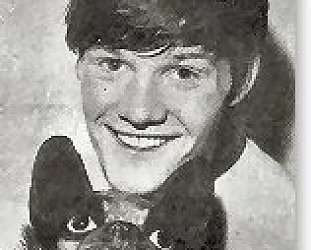
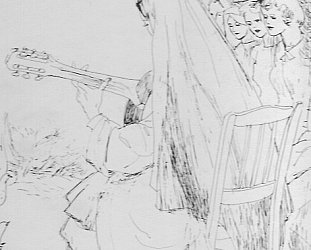
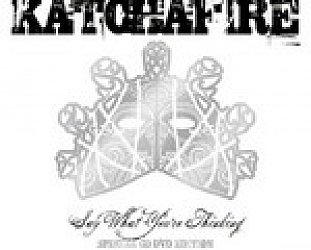

post a comment